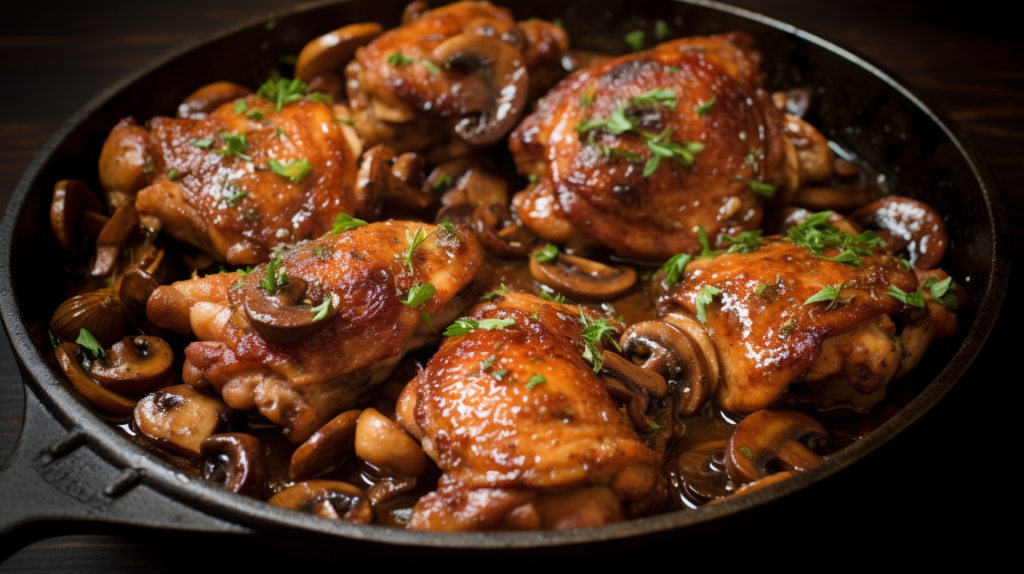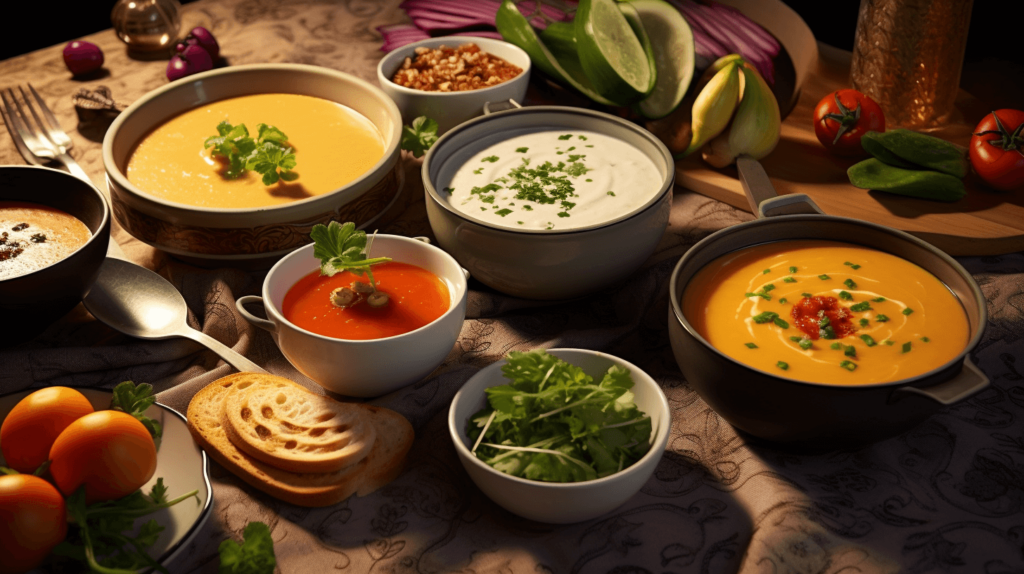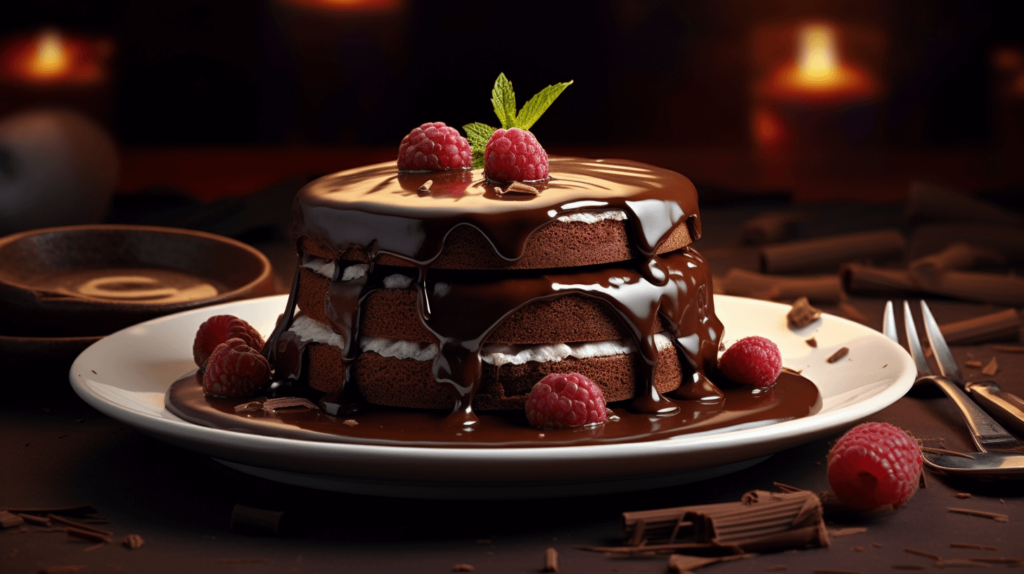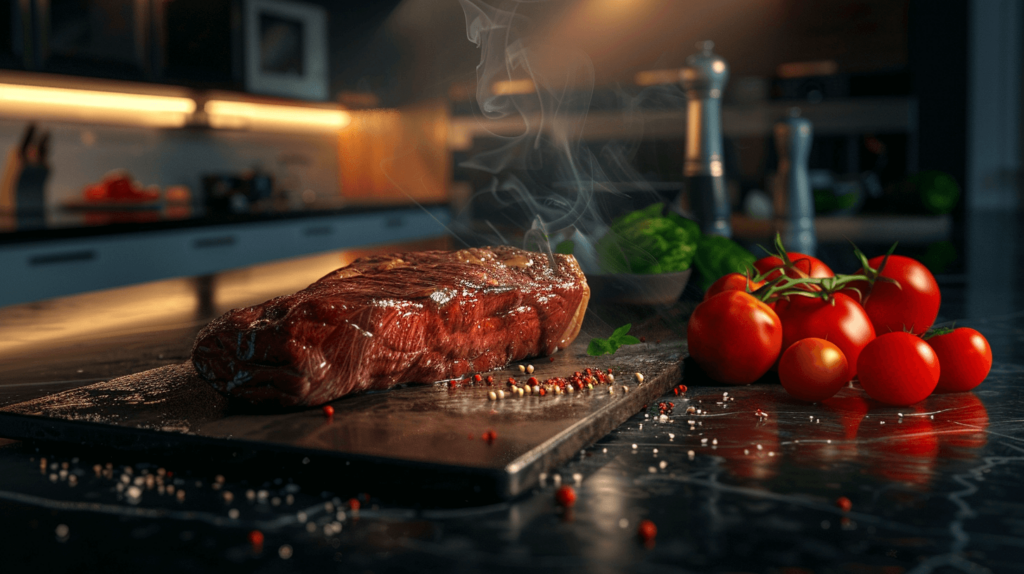Beef cuts can be confusing and overwhelming for many home cooks. With so many different cuts available, it can be difficult to know which one to choose for a particular recipe. However, understanding the different cuts and their characteristics is essential for cooking delicious beef dishes.
Different cuts of beef come from different parts of the animal and have varying levels of tenderness and flavor. Some cuts are best suited for grilling, while others are better for roasting or braising. By understanding the characteristics of each cut, you can choose the right one for your desired cooking method and achieve the best results.
Beef Preparation Methods: Grilling, Roasting, Braising, and More
There are various methods for preparing beef, including grilling, roasting, braising, and more. Each method requires different techniques and equipment, and can result in different textures and flavors.
Grilling is a popular method for cooking beef, as it imparts a smoky flavor and creates a charred exterior. It is best suited for tender cuts of beef that cook quickly, such as sirloin, ribeye, and flank steak. To grill beef, preheat the grill to high heat and cook the meat directly over the flames. Flip the meat halfway through cooking to ensure even doneness.
Roasting is another popular method for cooking beef, especially larger cuts such as tenderloin or top round. Roasting involves cooking the meat in an oven at a high temperature until it reaches the desired level of doneness. This method allows for even cooking and creates a flavorful crust on the outside of the meat. To roast beef, preheat the oven to the desired temperature and place the meat on a rack in a roasting pan. Cook until a meat thermometer inserted into the thickest part of the meat registers the desired temperature.
Braising is a slow-cooking method that involves cooking beef in liquid for an extended period of time. This method is best suited for tougher cuts of beef, such as chuck, brisket, and short ribs. Braising breaks down the tough connective tissues in the meat, resulting in tender and flavorful dishes. To braise beef, sear the meat in a hot pan to develop a crust, then transfer it to a pot or Dutch oven. Add liquid such as broth or wine, cover, and cook on low heat for several hours until the meat is tender.
Cooking Beef Perfectly: Temperature, Timing, and Resting
Cooking beef perfectly requires attention to temperature, timing, and resting. Overcooking or undercooking can result in tough or dry meat, while resting allows the juices to redistribute and create a more tender and flavorful dish.
The internal temperature of beef is a crucial factor in determining its doneness. Different cuts of beef have different recommended internal temperatures for optimal flavor and texture. For example, a medium-rare steak should be cooked to an internal temperature of 135°F (57°C), while a well-done steak should be cooked to an internal temperature of 160°F (71°C). It is important to use a meat thermometer to accurately measure the internal temperature of the meat.
Timing is also important when cooking beef. Each cut of beef has a recommended cooking time based on its thickness and desired level of doneness. It is important to follow these guidelines to ensure that the meat is cooked evenly and to the desired level of doneness. Undercooking can result in raw or tough meat, while overcooking can result in dry or chewy meat.
Resting the meat after cooking is another crucial step in achieving perfectly cooked beef. Resting allows the juices in the meat to redistribute, resulting in a more tender and flavorful dish. After removing the meat from the heat source, tent it loosely with foil and let it rest for at least 5-10 minutes. This resting period allows the meat to relax and retain its juices, resulting in a more succulent and delicious final product.
The Best Beef Cuts for Grilling: Sirloin, Ribeye, and More
Grilling is a popular method for cooking beef, and certain cuts are better suited for this method. Grilling imparts a smoky flavor and creates a charred exterior, making it perfect for tender cuts of beef that cook quickly.
Sirloin is one of the best cuts for grilling. It comes from the rear back portion of the animal and is known for its tenderness and rich flavor. Sirloin steaks are versatile and can be cooked to various levels of doneness, from rare to well-done. They are best cooked over high heat for a short amount of time to achieve a juicy and flavorful result.
Ribeye is another excellent cut for grilling. It comes from the rib section of the animal and is known for its marbling, which gives it a rich and buttery flavor. Ribeye steaks are tender and juicy, making them perfect for grilling. They can be cooked to various levels of doneness, but are best enjoyed medium-rare to medium.
Flank steak is a lean and flavorful cut that is perfect for grilling. It comes from the abdominal muscles of the animal and has a pronounced beefy flavor. Flank steak should be cooked quickly over high heat to medium-rare or medium doneness to ensure tenderness. It is important to slice flank steak against the grain to maximize tenderness.
The Best Beef Cuts for Roasting: Tenderloin, Top Round, and More
Roasting is another popular method for cooking beef, and certain cuts are better suited for this method. Roasting involves cooking the meat in an oven at a high temperature until it reaches the desired level of doneness.
Tenderloin is one of the best cuts for roasting. It comes from the loin section of the animal and is known for its tenderness and mild flavor. Tenderloin is often referred to as the “king of steaks” and is prized for its melt-in-your-mouth texture. It can be roasted whole or cut into individual steaks, and is best enjoyed medium-rare to medium.
Top round is another excellent cut for roasting. It comes from the hind leg of the animal and is lean and flavorful. Top round is often used for roast beef and can be cooked to various levels of doneness. It is important to slice top round against the grain to maximize tenderness.
Brisket is a tough cut of beef that benefits from slow roasting. It comes from the breast section of the animal and is known for its rich flavor. Brisket is often used in barbecue and can be cooked low and slow until it becomes tender and juicy. It is important to allow enough time for brisket to cook, as it can take several hours to become tender.
The Best Beef Cuts for Braising: Chuck, Brisket, and More
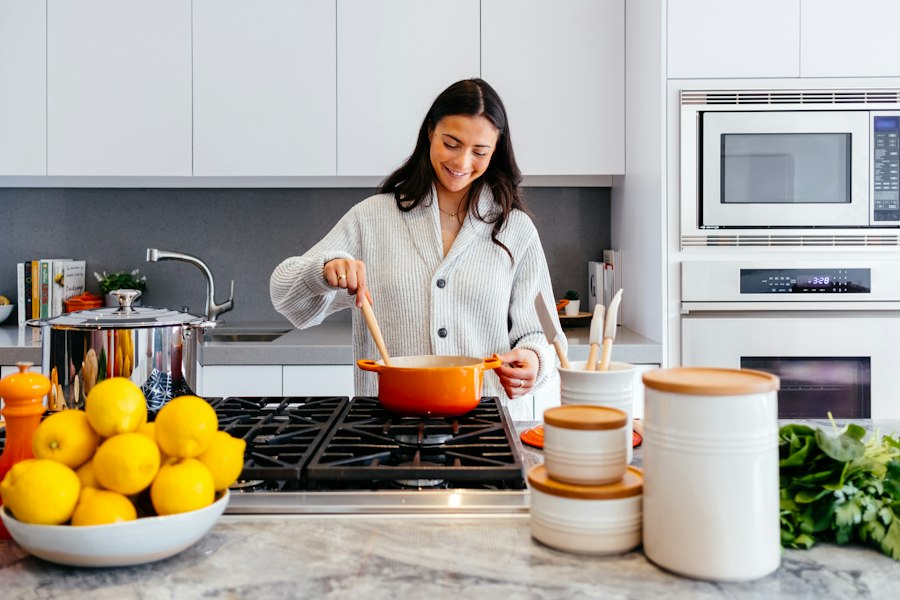
Braising is a slow-cooking method that involves cooking beef in liquid for an extended period of time. This method is best suited for tougher cuts of beef that benefit from the slow cooking process.
Chuck is one of the best cuts for braising. It comes from the shoulder section of the animal and has a rich beefy flavor. Chuck roast or chuck steak are often used in stews or pot roasts, as they become tender and flavorful when cooked slowly in liquid. The connective tissues in chuck break down during braising, resulting in a melt-in-your-mouth texture.
Brisket, as mentioned earlier, is also an excellent cut for braising. Its tough nature benefits from the slow cooking process, resulting in a tender and flavorful dish. Brisket is often used in barbecue and can be cooked low and slow until it becomes tender and juicy.
Short ribs are another great cut for braising. They come from the rib section of the animal and are known for their rich flavor and tender meat. Short ribs are often braised in a flavorful liquid until they become fall-off-the-bone tender. They are perfect for hearty stews and braised dishes.
Beef Recipes Tips: Marinades, Rubs, and Seasonings
Adding flavor to beef dishes can be done through marinades, rubs, and seasonings. Different cuts and preparation methods may require different flavor profiles, and experimenting with different combinations can result in delicious dishes.
Marinades are a great way to infuse flavor into beef. They typically consist of an acidic ingredient, such as vinegar or citrus juice, along with oil, herbs, spices, and other flavorings. Marinades can help tenderize tougher cuts of beef and add depth of flavor. To marinate beef, place it in a resealable plastic bag or container and pour the marinade over it. Allow the meat to marinate in the refrigerator for at least 30 minutes or up to 24 hours before cooking.
Rubs are another way to add flavor to beef. They consist of a mixture of herbs, spices, salt, and sugar that is rubbed onto the surface of the meat before cooking. Rubs can create a flavorful crust on the outside of the meat and enhance its natural flavors. To use a rub, simply massage it onto the surface of the meat, making sure to coat it evenly.
Seasonings such as salt and pepper are essential for bringing out the natural flavors of beef. Salt helps to enhance the taste of the meat, while pepper adds a subtle heat. It is important to season beef generously with salt and pepper before cooking to ensure that it is properly seasoned throughout.
Perfect Beef Methods: Sous Vide, Smoking, and Reverse Searing
Sous vide, smoking, and reverse searing are alternative methods for cooking beef that can result in unique textures and flavors. These methods require specialized equipment and techniques, but can be worth the effort for a truly delicious dish.
Sous vide is a cooking method that involves vacuum-sealing the meat in a bag and cooking it in a water bath at a precise temperature. This method allows for precise control over the doneness of the meat and results in tender and juicy beef. To cook beef sous vide, place it in a vacuum-sealed bag with any desired seasonings or marinades. Submerge the bag in a water bath heated to the desired temperature and cook for the recommended time. After cooking, sear the meat in a hot pan or on a grill to develop a crust.
Smoking is a method that involves cooking beef over indirect heat with the addition of wood chips or chunks to create smoke. This method imparts a smoky flavor into the meat and creates a unique texture. To smoke beef, preheat a smoker or grill with a smoker box to the desired temperature. Place the meat on the grates away from direct heat and add soaked wood chips or chunks to create smoke. Cook the meat until it reaches the desired level of doneness.
Reverse searing is a method that involves slow-cooking beef at a low temperature before finishing it with a high-heat sear. This method allows for even cooking and creates a flavorful crust on the outside of the meat. To reverse sear beef, preheat an oven to a low temperature and cook the meat until it reaches an internal temperature of about 10-15 degrees below the desired level of doneness. Remove the meat from the oven and let it rest while preheating a skillet or grill to high heat. Sear the meat on all sides until a crust forms.
Beef Dish Preparation: Tacos, Burgers, Stews, and More
Beef can be used in a variety of dishes, from tacos and burgers to stews and roasts. Each dish may require different preparation methods and cuts of beef, but can result in a delicious and satisfying meal.
Tacos are a popular dish that can be made with various cuts of beef. Skirt steak or flank steak are great choices for tacos, as they are flavorful and tender when cooked quickly over high heat. To make beef tacos, marinate the meat in a flavorful marinade, then grill or sear it until it reaches the desired level of doneness. Slice the meat thinly against the grain and serve in tortillas with your favorite toppings.
Burgers are another classic dish that can be made with ground beef. Ground chuck or ground sirloin are good choices for burgers, as they have a good balance of fat and flavor. To make beef burgers, season the ground beef with salt and pepper, then form it into patties. Cook the patties on a grill or stovetop until they reach the desired level of doneness. Serve the burgers on buns with your favorite toppings.
Stews are hearty dishes that can be made with tougher cuts of beef that benefit from slow cooking. Chuck roast or stew meat are great choices for stews, as they become tender and flavorful when cooked slowly in liquid. To make beef stew, sear the meat in a hot pan to develop a crust, then transfer it to a pot or Dutch oven. Add vegetables, broth, and seasonings, then simmer on low heat for several hours until the meat is tender.
Roasts are another delicious way to enjoy beef. Prime rib or ribeye roast are excellent choices for roasts, as they are tender and flavorful. To make a beef roast, season the meat with salt, pepper, and any desired herbs or spices. Place the roast on a rack in a roasting pan and cook in the oven at a high temperature until it reaches the desired level of doneness. Let the roast rest before slicing and serving.
Enjoying Delicious Beef Dishes at Home
Understanding the different cuts and preparation methods for beef can be overwhelming, but experimenting with different techniques and flavors can result in delicious dishes at home. Whether you prefer grilling, roasting, braising, or trying alternative methods such as sous vide or smoking, there are endless possibilities for creating mouthwatering beef dishes.
By choosing the right cut of beef for your desired cooking method and paying attention to temperature, timing, and resting, you can achieve perfectly cooked beef every time. Don’t be afraid to try different marinades, rubs, and seasonings to add flavor to your dishes. And remember, beef can be used in a variety of dishes, from tacos and burgers to stews and roasts.
So next time you’re in the mood for a delicious beef dish, don’t be overwhelmed by the choices. Take the time to understand the different cuts and preparation methods, and enjoy creating your own mouthwatering beef dishes at home.
If you’re looking for a delicious and hearty recipe to try, check out this Chicken Hashbrown Casserole recipe from Relish the Daily. It’s a comforting dish that combines tender chicken, crispy hashbrowns, and creamy cheese for the perfect weeknight meal. Whether you’re cooking for your family or hosting a brunch with friends, this casserole is sure to be a hit. Give it a try and enjoy the mouthwatering flavors!


